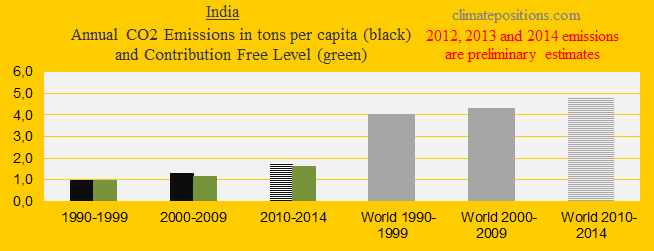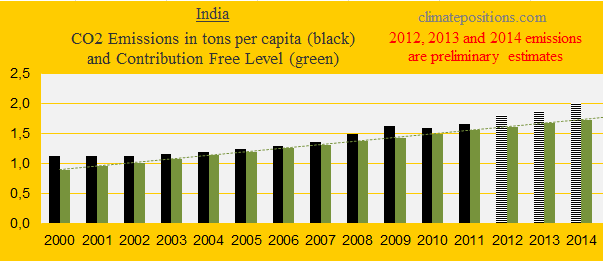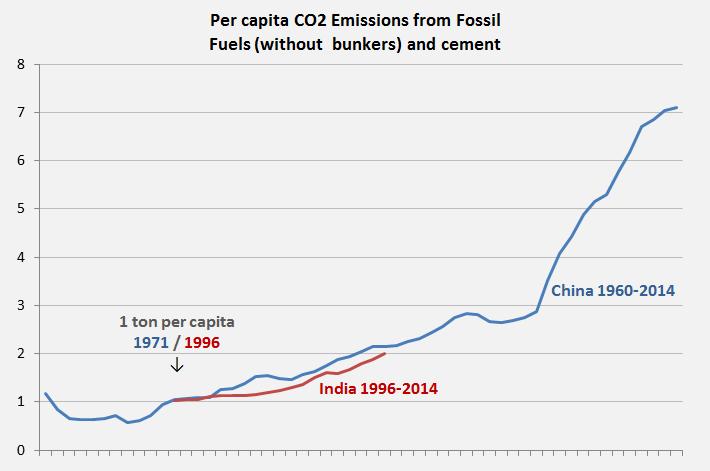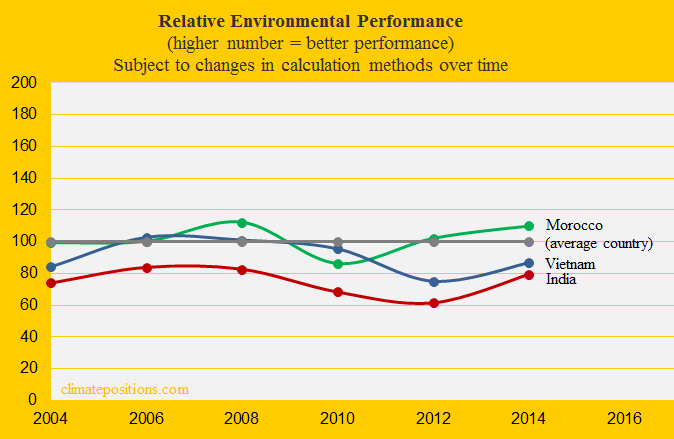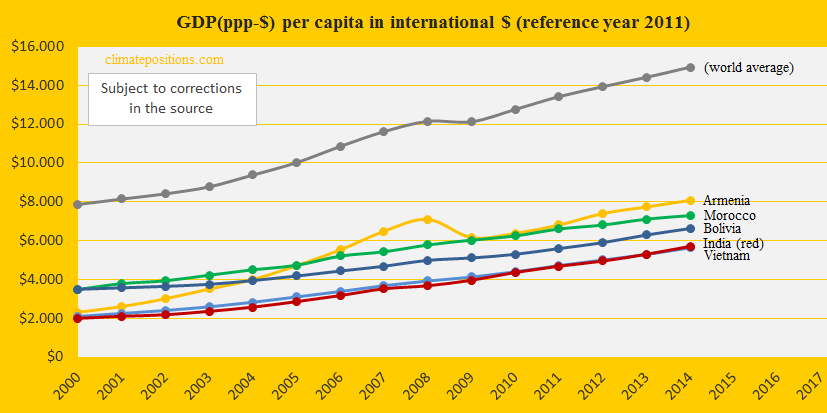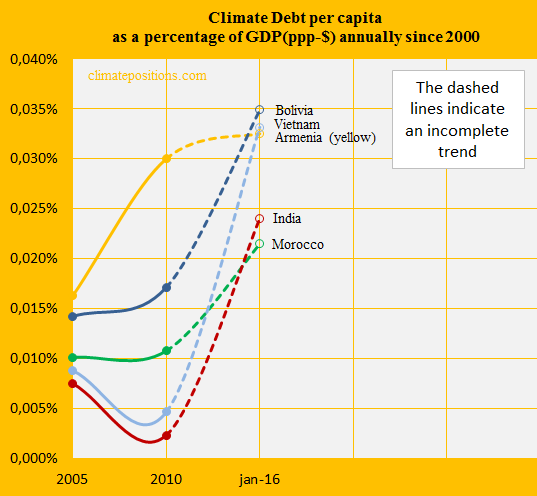India’s Climate Debt is on track for something big
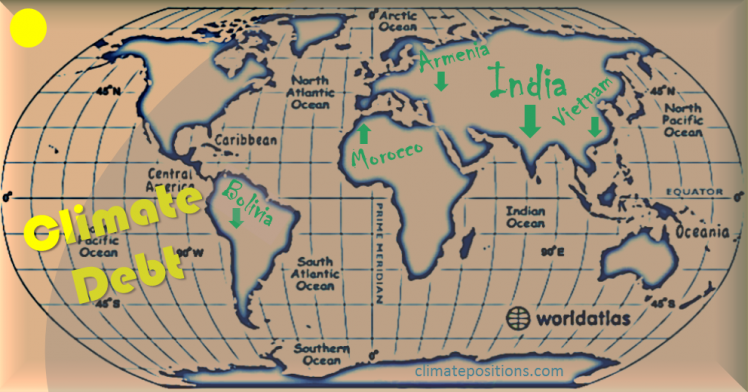
2016
India’s accumulated Climate Debt is $13 per capita which ranks the populous country 84th among 148 countries (see the ‘Ranking’). The current share of the fast growing global Climate Debt is 0.29%, compared to 0.04% in 2010. The following examines India’s CO2 Emissions (the increase-rates is compared to the historic Chinese rates), Environmental Performance, GDP(ppp-$) and Climate Debt in comparison with Vietnam, Morocco, Armenia and Bolivia, all ranked between 77th and 82nd.
The first diagram (below) shows India’s per capita CO2 Emissions from fossil fuels (without bunker fuels) and cement production in decades in comparison with the world average. CO2 Emissions since 2012 are preliminary estimates. The green bars are the Contribution Free Level, determined by the level of CO2 Emissions in the 1990s and a number of continuously updated ‘Indicators’.
The diagram below shows the per capita CO2 Emissions from fossil fuels (without bunker fuels) and cement production since 2000. CO2 Emissions in 2012, 2013 and 2014 are preliminary estimates. The Contribution Free Level (the green bars) increases from 0.9 tons in 2000 to 2.0 tons by 2019. However, the Indian increase-rate is somewhat higher.
Often India’s emission trends are compared to the historic emissions of China. The next diagram shows the per capita CO2 Emissions from fossil fuels (without bunker fuels) and cement production – with 25 years of time delay between the two countries. China passed one ton of CO2 per capita in 1971 and India did so 25 years later in 1996. Today, China emits 27% of the global emissions and India around 7%. If India decides to copy China’s disastrous coal-burning-growth-strategy with reference to “national circumstances” and “intended nationally determined contributions”, then global warming is over the hills. India accounts for about 7% of the world’s proven coal reserves and is the 3rd largest coal producer, after China and the United States.
The relative Environmental Performance over time of India, Vietnam and Morocco, with the world’s average set at 100, is shown below. The ‘Environmental Performance Index’ published January 2016 (data-year is set at 2014 in the diagram) ranks India 141th among 180 countries. The best score is on Forests and the worst is on Air Quality. See more ‘Details on the Indian performance’. The previous ‘Index published in 2014’ ranked India 155th. Note that Environmental Performance Index and Ecological Footprint Network provide different rankings and trends due to a different focus.
The diagram below shows the development of GDP(ppp-$) per capita since 2000, in comparison with Vietnam, Morocco Armenia, Bolivia and the world average. All five countries are way below the world average.
The current Climate Debt’s share of the GDP(ppp-$), annually since 2000, was 0.02%. The development since 2005 is shown in the diagram below, along with the same group of countries (see the ‘Ranking‘). Only Armenia has improved in recent years.
See Population graphs of India and China at the bottom of the article ’China’s share of the global Climate Debt is growing fast’.
.
The current accumulated Climate Debt of India is $16.3 billion. If the Environmental Performance had been at world average the last decade, then the Climate Debt would have been $6.5 billion instead.
.
Data on carbon emissions (CO2 Emissions) from fossil fuels (without bunkers) and cement production are from Global Carbon Project (CDIAC); (links in the menu “Calculations”).
Source on Environmental Performance: Yale and Columbia University reports, published 2006-2016 (links in the menu “Calculations”).
Information on national GDP(ppp-$) per capita: Worldbank.
‘World Atlas‘ re-designed by Claus Andersen, 2016.
Comments are closed.
